5.5: Culture
- Page ID
- 151334
\( \newcommand{\vecs}[1]{\overset { \scriptstyle \rightharpoonup} {\mathbf{#1}} } \)
\( \newcommand{\vecd}[1]{\overset{-\!-\!\rightharpoonup}{\vphantom{a}\smash {#1}}} \)
\( \newcommand{\dsum}{\displaystyle\sum\limits} \)
\( \newcommand{\dint}{\displaystyle\int\limits} \)
\( \newcommand{\dlim}{\displaystyle\lim\limits} \)
\( \newcommand{\id}{\mathrm{id}}\) \( \newcommand{\Span}{\mathrm{span}}\)
( \newcommand{\kernel}{\mathrm{null}\,}\) \( \newcommand{\range}{\mathrm{range}\,}\)
\( \newcommand{\RealPart}{\mathrm{Re}}\) \( \newcommand{\ImaginaryPart}{\mathrm{Im}}\)
\( \newcommand{\Argument}{\mathrm{Arg}}\) \( \newcommand{\norm}[1]{\| #1 \|}\)
\( \newcommand{\inner}[2]{\langle #1, #2 \rangle}\)
\( \newcommand{\Span}{\mathrm{span}}\)
\( \newcommand{\id}{\mathrm{id}}\)
\( \newcommand{\Span}{\mathrm{span}}\)
\( \newcommand{\kernel}{\mathrm{null}\,}\)
\( \newcommand{\range}{\mathrm{range}\,}\)
\( \newcommand{\RealPart}{\mathrm{Re}}\)
\( \newcommand{\ImaginaryPart}{\mathrm{Im}}\)
\( \newcommand{\Argument}{\mathrm{Arg}}\)
\( \newcommand{\norm}[1]{\| #1 \|}\)
\( \newcommand{\inner}[2]{\langle #1, #2 \rangle}\)
\( \newcommand{\Span}{\mathrm{span}}\) \( \newcommand{\AA}{\unicode[.8,0]{x212B}}\)
\( \newcommand{\vectorA}[1]{\vec{#1}} % arrow\)
\( \newcommand{\vectorAt}[1]{\vec{\text{#1}}} % arrow\)
\( \newcommand{\vectorB}[1]{\overset { \scriptstyle \rightharpoonup} {\mathbf{#1}} } \)
\( \newcommand{\vectorC}[1]{\textbf{#1}} \)
\( \newcommand{\vectorD}[1]{\overrightarrow{#1}} \)
\( \newcommand{\vectorDt}[1]{\overrightarrow{\text{#1}}} \)
\( \newcommand{\vectE}[1]{\overset{-\!-\!\rightharpoonup}{\vphantom{a}\smash{\mathbf {#1}}}} \)
\( \newcommand{\vecs}[1]{\overset { \scriptstyle \rightharpoonup} {\mathbf{#1}} } \)
\( \newcommand{\vecd}[1]{\overset{-\!-\!\rightharpoonup}{\vphantom{a}\smash {#1}}} \)
\(\newcommand{\avec}{\mathbf a}\) \(\newcommand{\bvec}{\mathbf b}\) \(\newcommand{\cvec}{\mathbf c}\) \(\newcommand{\dvec}{\mathbf d}\) \(\newcommand{\dtil}{\widetilde{\mathbf d}}\) \(\newcommand{\evec}{\mathbf e}\) \(\newcommand{\fvec}{\mathbf f}\) \(\newcommand{\nvec}{\mathbf n}\) \(\newcommand{\pvec}{\mathbf p}\) \(\newcommand{\qvec}{\mathbf q}\) \(\newcommand{\svec}{\mathbf s}\) \(\newcommand{\tvec}{\mathbf t}\) \(\newcommand{\uvec}{\mathbf u}\) \(\newcommand{\vvec}{\mathbf v}\) \(\newcommand{\wvec}{\mathbf w}\) \(\newcommand{\xvec}{\mathbf x}\) \(\newcommand{\yvec}{\mathbf y}\) \(\newcommand{\zvec}{\mathbf z}\) \(\newcommand{\rvec}{\mathbf r}\) \(\newcommand{\mvec}{\mathbf m}\) \(\newcommand{\zerovec}{\mathbf 0}\) \(\newcommand{\onevec}{\mathbf 1}\) \(\newcommand{\real}{\mathbb R}\) \(\newcommand{\twovec}[2]{\left[\begin{array}{r}#1 \\ #2 \end{array}\right]}\) \(\newcommand{\ctwovec}[2]{\left[\begin{array}{c}#1 \\ #2 \end{array}\right]}\) \(\newcommand{\threevec}[3]{\left[\begin{array}{r}#1 \\ #2 \\ #3 \end{array}\right]}\) \(\newcommand{\cthreevec}[3]{\left[\begin{array}{c}#1 \\ #2 \\ #3 \end{array}\right]}\) \(\newcommand{\fourvec}[4]{\left[\begin{array}{r}#1 \\ #2 \\ #3 \\ #4 \end{array}\right]}\) \(\newcommand{\cfourvec}[4]{\left[\begin{array}{c}#1 \\ #2 \\ #3 \\ #4 \end{array}\right]}\) \(\newcommand{\fivevec}[5]{\left[\begin{array}{r}#1 \\ #2 \\ #3 \\ #4 \\ #5 \\ \end{array}\right]}\) \(\newcommand{\cfivevec}[5]{\left[\begin{array}{c}#1 \\ #2 \\ #3 \\ #4 \\ #5 \\ \end{array}\right]}\) \(\newcommand{\mattwo}[4]{\left[\begin{array}{rr}#1 \amp #2 \\ #3 \amp #4 \\ \end{array}\right]}\) \(\newcommand{\laspan}[1]{\text{Span}\{#1\}}\) \(\newcommand{\bcal}{\cal B}\) \(\newcommand{\ccal}{\cal C}\) \(\newcommand{\scal}{\cal S}\) \(\newcommand{\wcal}{\cal W}\) \(\newcommand{\ecal}{\cal E}\) \(\newcommand{\coords}[2]{\left\{#1\right\}_{#2}}\) \(\newcommand{\gray}[1]{\color{gray}{#1}}\) \(\newcommand{\lgray}[1]{\color{lightgray}{#1}}\) \(\newcommand{\rank}{\operatorname{rank}}\) \(\newcommand{\row}{\text{Row}}\) \(\newcommand{\col}{\text{Col}}\) \(\renewcommand{\row}{\text{Row}}\) \(\newcommand{\nul}{\text{Nul}}\) \(\newcommand{\var}{\text{Var}}\) \(\newcommand{\corr}{\text{corr}}\) \(\newcommand{\len}[1]{\left|#1\right|}\) \(\newcommand{\bbar}{\overline{\bvec}}\) \(\newcommand{\bhat}{\widehat{\bvec}}\) \(\newcommand{\bperp}{\bvec^\perp}\) \(\newcommand{\xhat}{\widehat{\xvec}}\) \(\newcommand{\vhat}{\widehat{\vvec}}\) \(\newcommand{\uhat}{\widehat{\uvec}}\) \(\newcommand{\what}{\widehat{\wvec}}\) \(\newcommand{\Sighat}{\widehat{\Sigma}}\) \(\newcommand{\lt}{<}\) \(\newcommand{\gt}{>}\) \(\newcommand{\amp}{&}\) \(\definecolor{fillinmathshade}{gray}{0.9}\)In this section, you will be:
- Learn about Egypt, its Geographical location, famous cities, its most famous artifacts, and its traditional food and clothes.
Egypt مصر: Misr
Facts to know about Egypt
- Official Name: Arab Republic of Egypt- جمهورية مصر العربية- jumhuriat misr alearabia
- Capital: Cairo- القاهرة- Al Qahirah
- Population: 106,789,274 - (2022)
- Currency: Egyptian Pound- الجنيه المصري- aljunayh almisriu
- Continent: Africa- أفريقيا- afriqya
- Official Lagrange: Modern Standard Arabic -اللغة العربية الفصحى الحديثة- allughat alearabiat alfushaa alhaditha
1.1 Geographical location and flag
Egypt is located in the northeast corner of Africa. It is the link between northeast of Africa with the southwest corner of Asia. It borders with Sudan to the south, libya to the west, the Red sea and Gulf of Aqaba to the east, The Mediterranean Sea to the north, and and Gaza Strip to the northeast. Egypt was a cradle of one of the most ancient Middle Eastern civilization, the Pharaonic ancient Egyptian civilization.
Watch this movie about Ancient Egypt and learn about ancient Egyptian
1.2 Famous cities
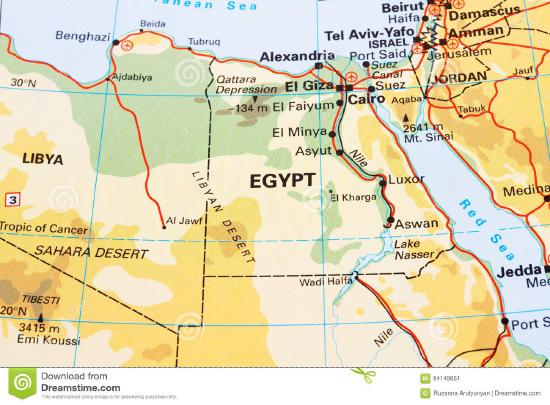
| City Name | City Name in Arabic | Pronunciation | Image |
|---|---|---|---|
| Cairo | القاهرة | Al Qahirah | |
| Alexandria | الاسكندرية | Al-Iskandariyah |
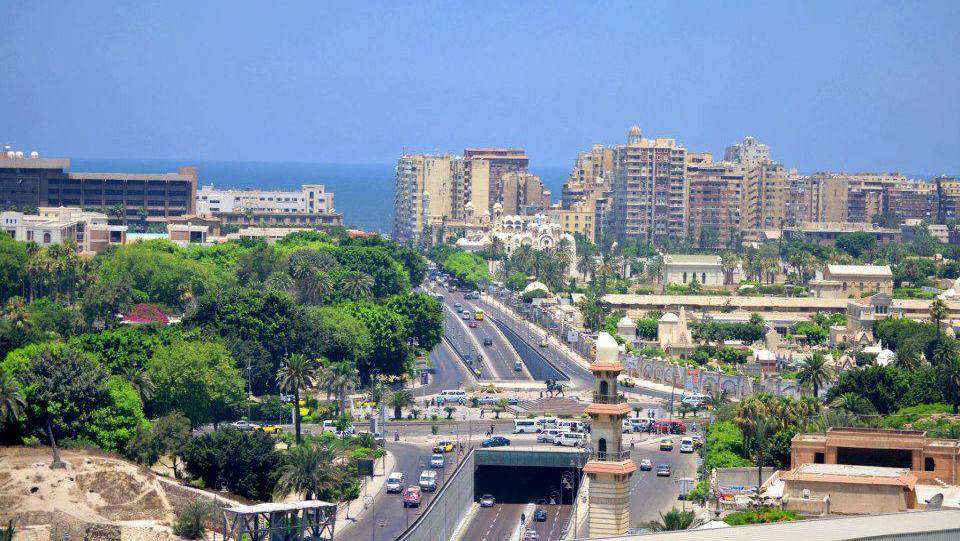
|
| Bur Said | بور سعيد | Boor Said |
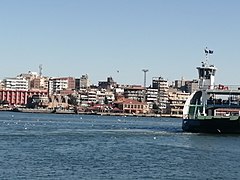
|
| As- Suez | السويس | As -Suways |
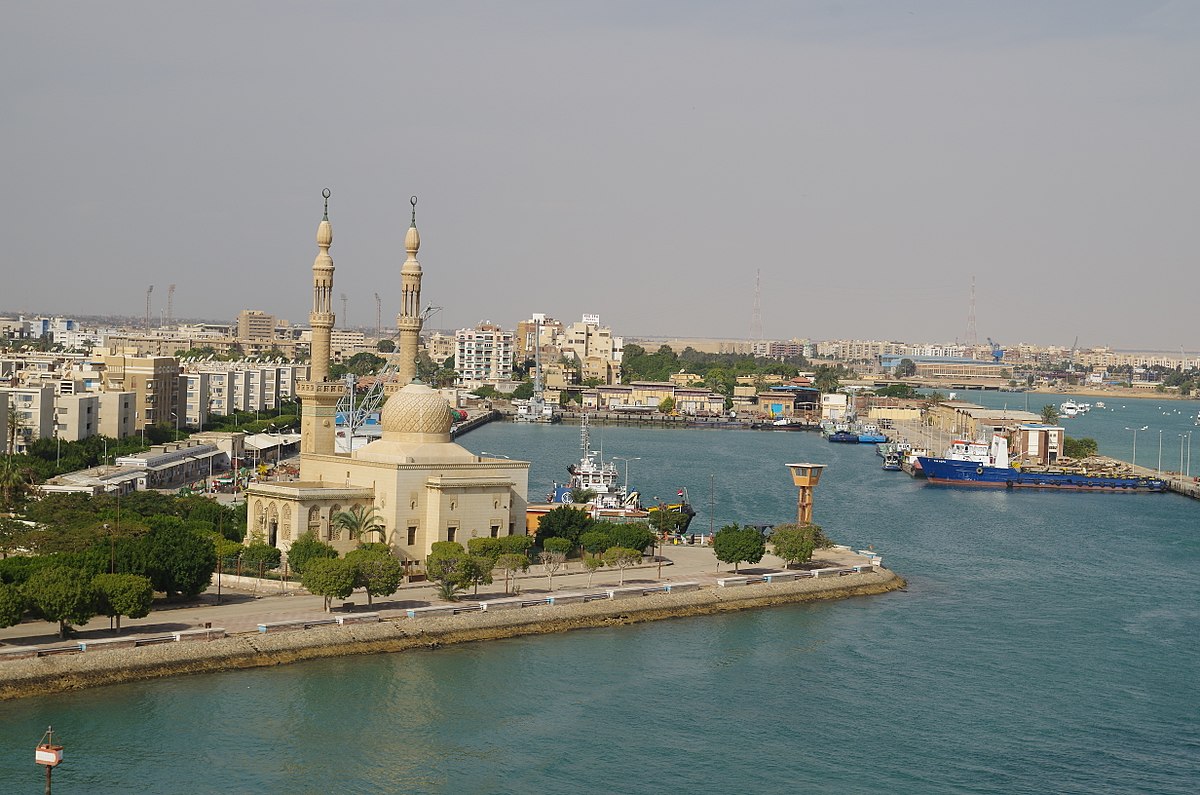
|
| Al- Mansourah | المنصورة | Al Mansoorah |
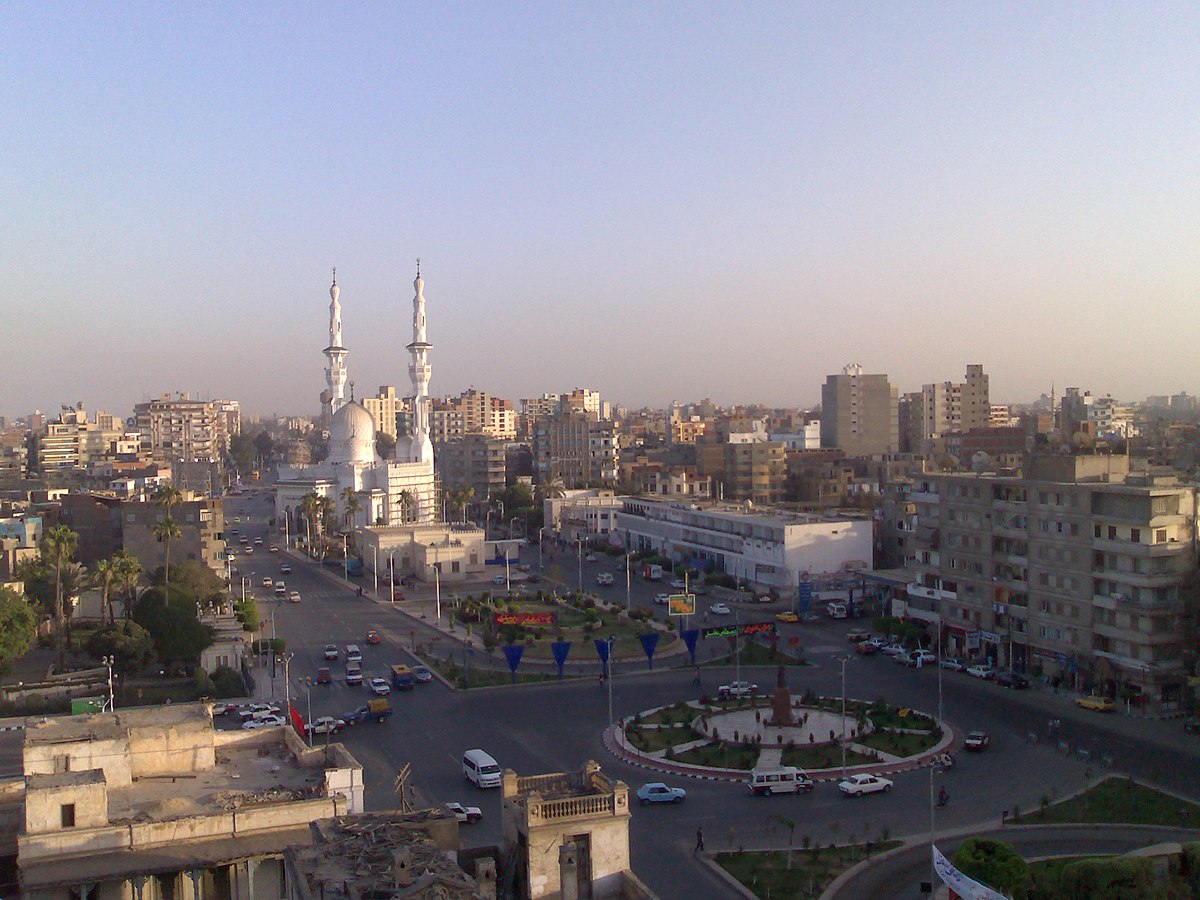
|
| Tanta | طنطا | Tanta |
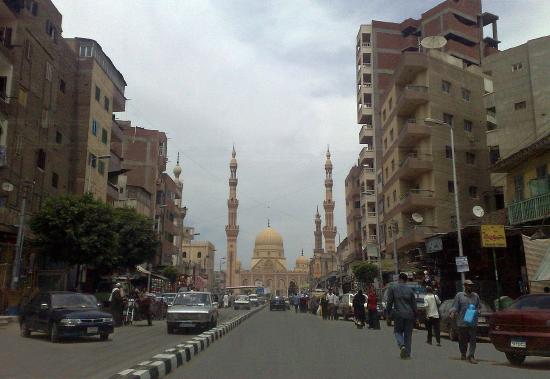
|
| Asyut | أسيوط | Assyout |
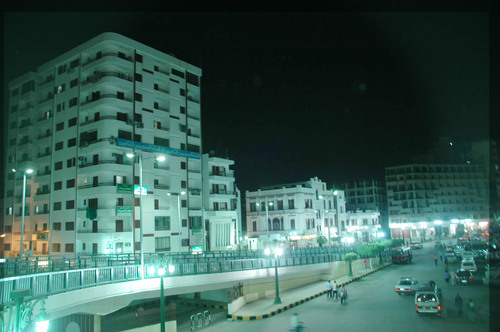
|
| Al-Fayoum | الفيوم | Al-Fayyoum |
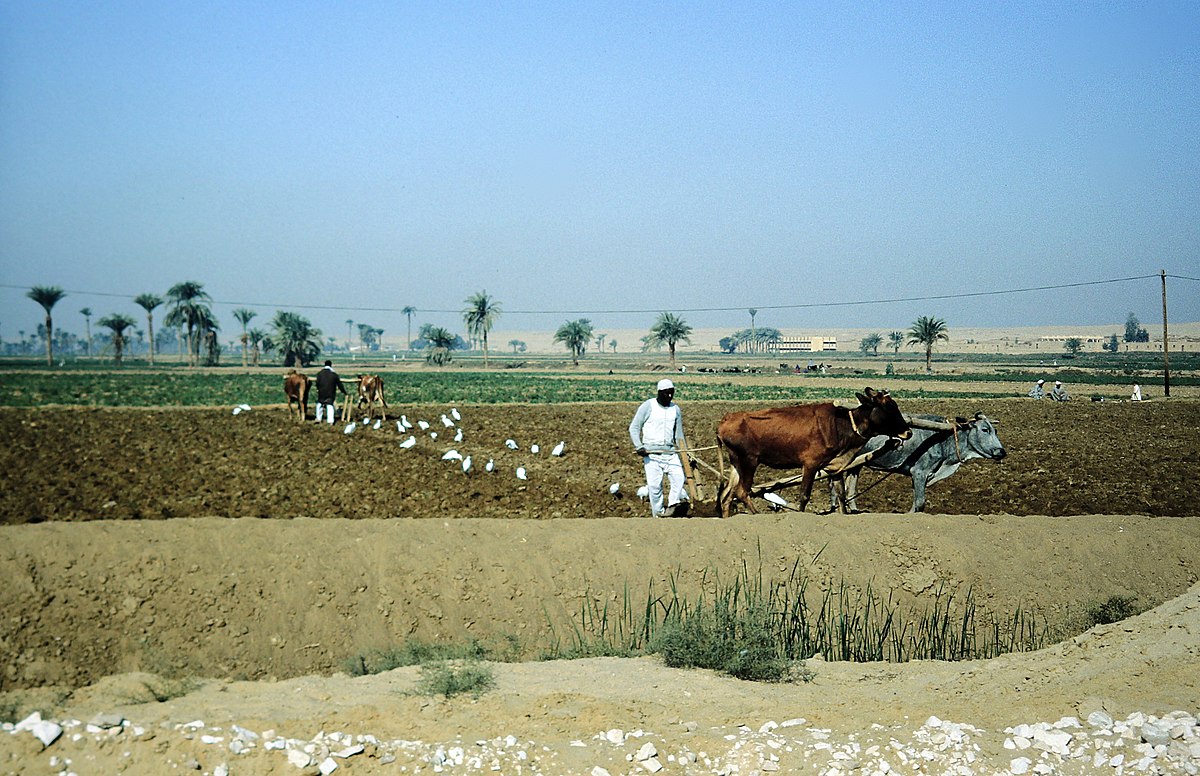
|
| Az-Zagazig | الزقازيق | Az-Zagazeeq |
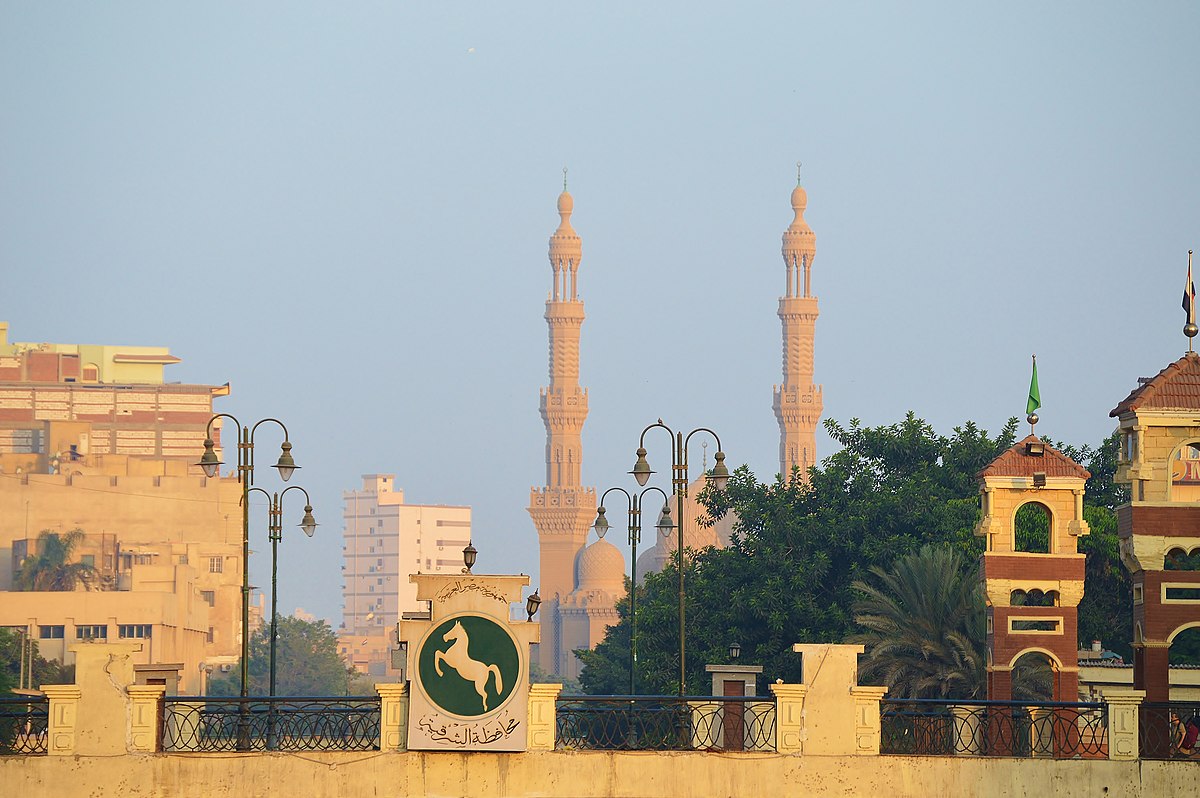
|
1.3 Most famous artifacts
The Great Sphinx of Giza
The Great Sphinx of Giza is one of the most famous artifacts in Egypt and one of the largest monuments in the world. It has two parts a lion's body and a human head. It is a huge 4,500-year-old limestone statue measuring 240 feet long and 66 feet high near the Great Pyramid in Giza.
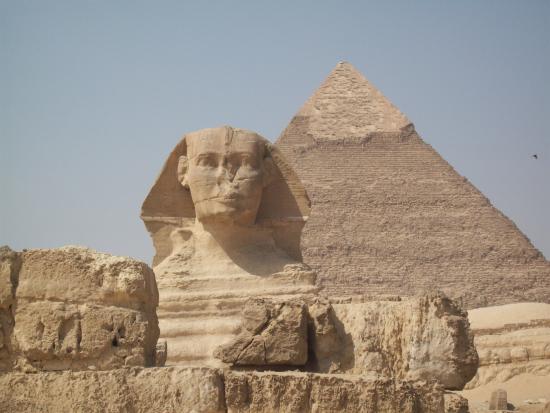
A View of the Great Sphinx of Giza beside a Pyramid; pexels license
The Rosetta Stone
The Rosetta Stone is one of the most ancient artifacts in Egypt. It went back to Pharaoh Ptolemy V. It contains a decree about religious texts written in three different writing systems Greek, Egyptian Hieroglyphics, and Egyptian Demotic. It is the key to undersatnd the ancient writing system of egypt.

Nefertiti Bust
Nefertiti Bust is one of the most famous artifacts of the most beautiful woman in Ancient Egypt. She is the great royal wife of the Egyptian Pharaoh Akhenaton. The bust is made of limestone covered with modeled gypsum.
Egyptian Pyramids
Egyptian Pyramids are Ancient buildings and great structures that are located in Egypt. They were built during the brightest time of the Egyptian civilizations especially the Great Pyramids of Giza. The oldest pyramids were built around 2630 B.C. at Saqqarah for the king Djoser.
Ramesses II
Ramesses II is known as Ramesses the Great. He was one of the most famous pharaohs of Egypt. He was the third Pharaoh of the Nineteenth Dynasty. He was famous for his bravery, leadership, and martial Skills over the Egyptian army.
Traditional Food & Clothing in Egypt
Most Popular Food in Egypt
| Food in English | Food in Arabic | Ingredients | Image |
|---|---|---|---|
| Ful Medames | فول مدمس |
Fava Beans Stew with lemon juice, olive oil, garlic and cumin |

|
| Ta'meya | طعمية أو فلافل |
Egyptian Falafel |
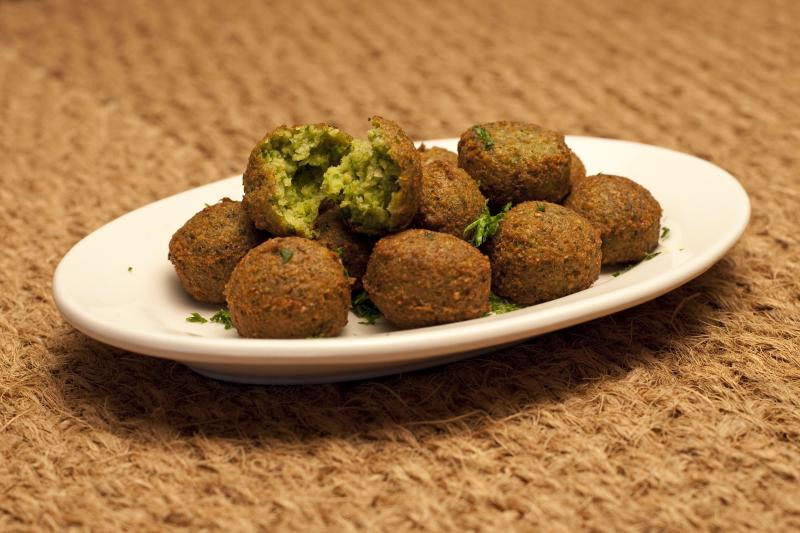
|
| Koshari | كشري |
Mixed of rice, lentils, macaroni with spicy sauce |
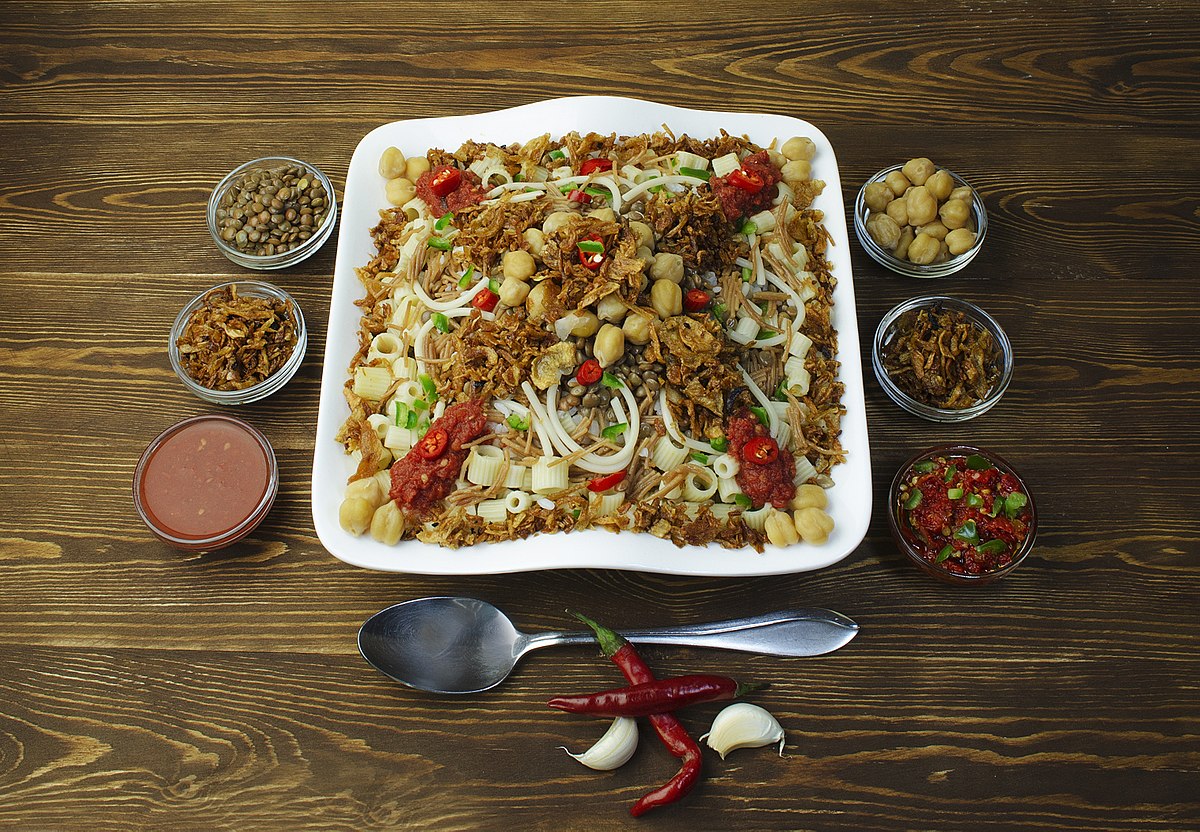
|
| Mulukhiya | ملوخية |
leaves of the Corchorus plant with chicken or rabbit or meat |
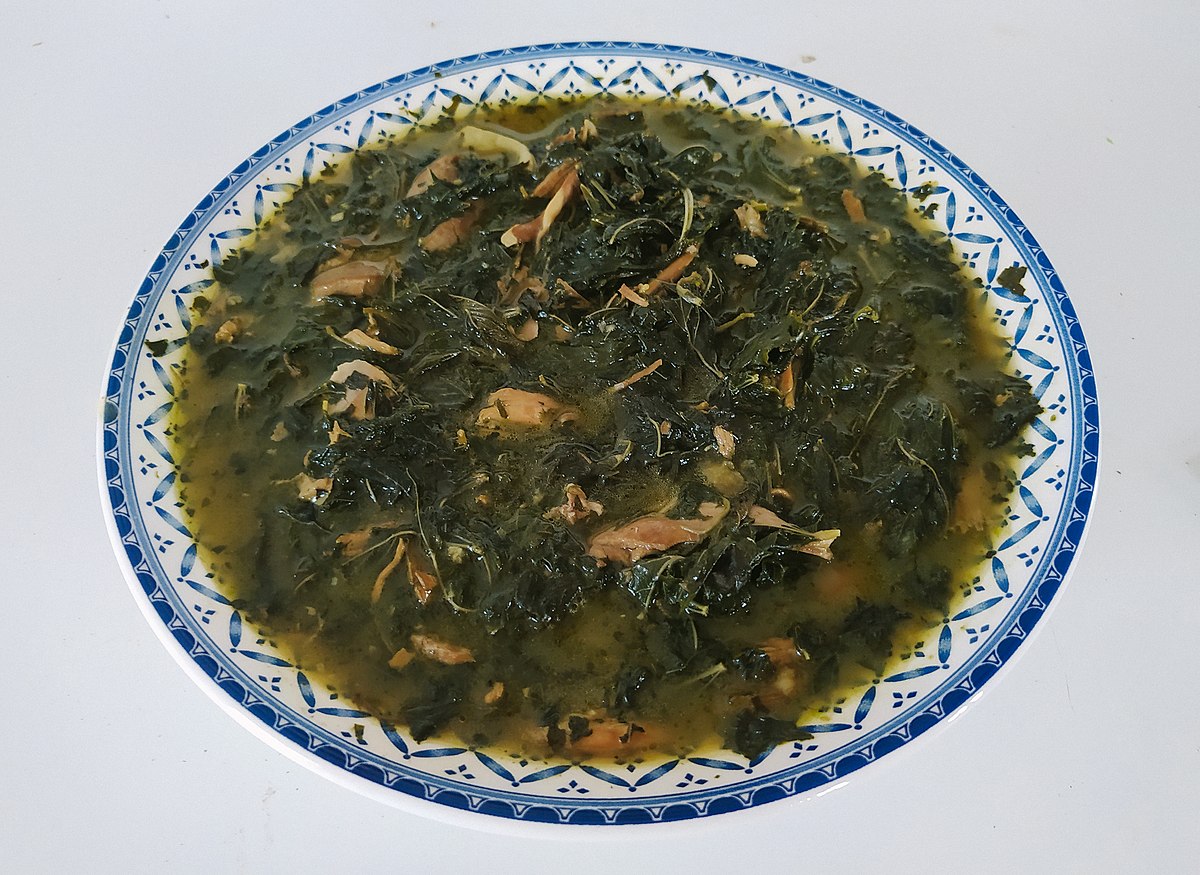
|
| Hamam Mahshi | حمام محشي |
Stuffed young domestic pigeon |
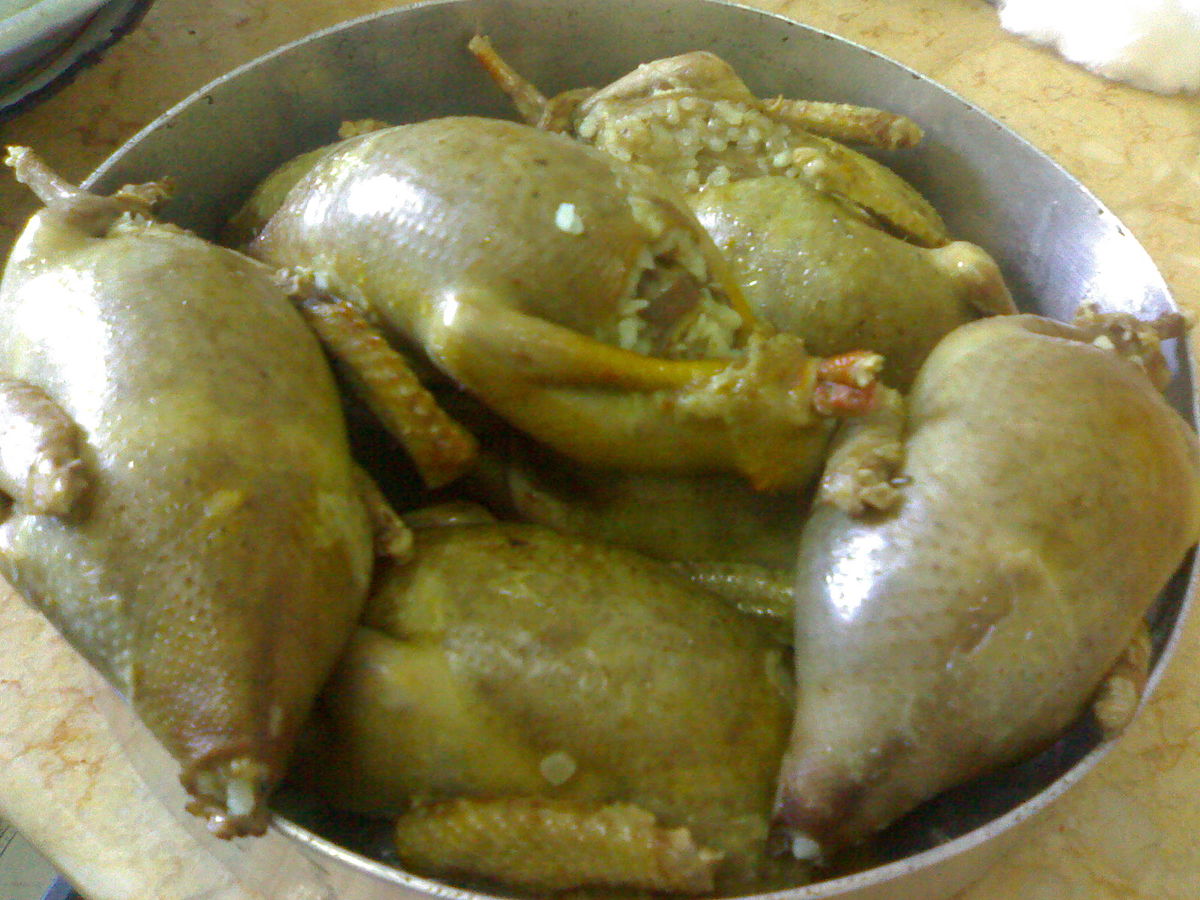
|
| Makarona Beshamel | معكرونة بشاميل |
Pasta with ground beef and bechamel sauce |
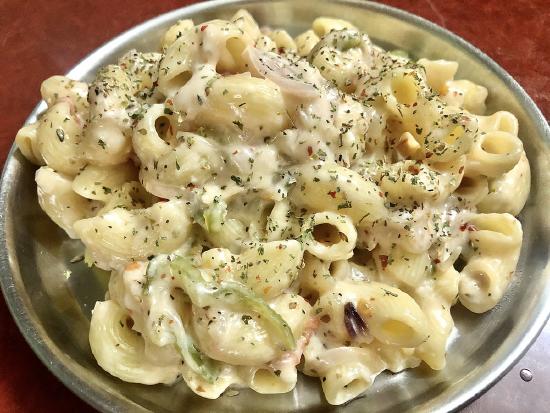
|
| Basbousa, a dessert dish | بسبوسة |
( Semolina, Coconut, and yogurt) |
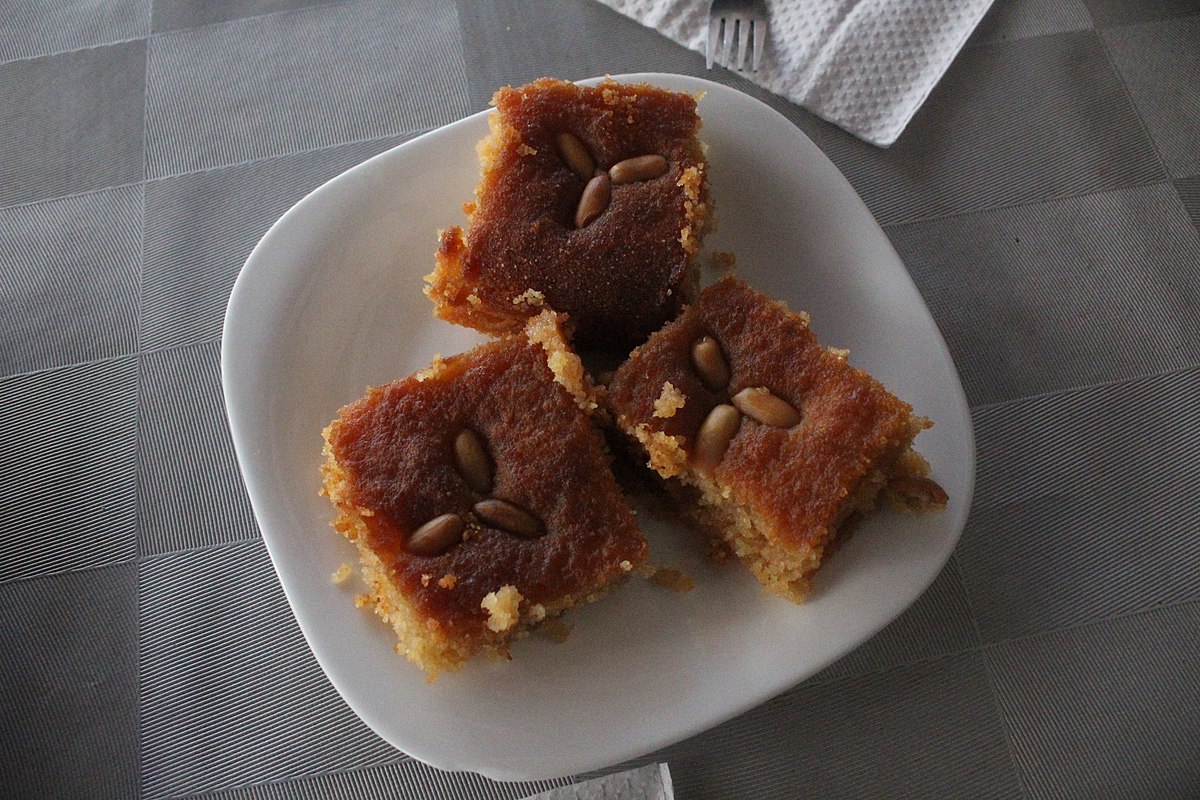
|
| Om Ali | أم علي |
Egyptian Bread Pudding made from milk, sugar, and pastry phyllo |
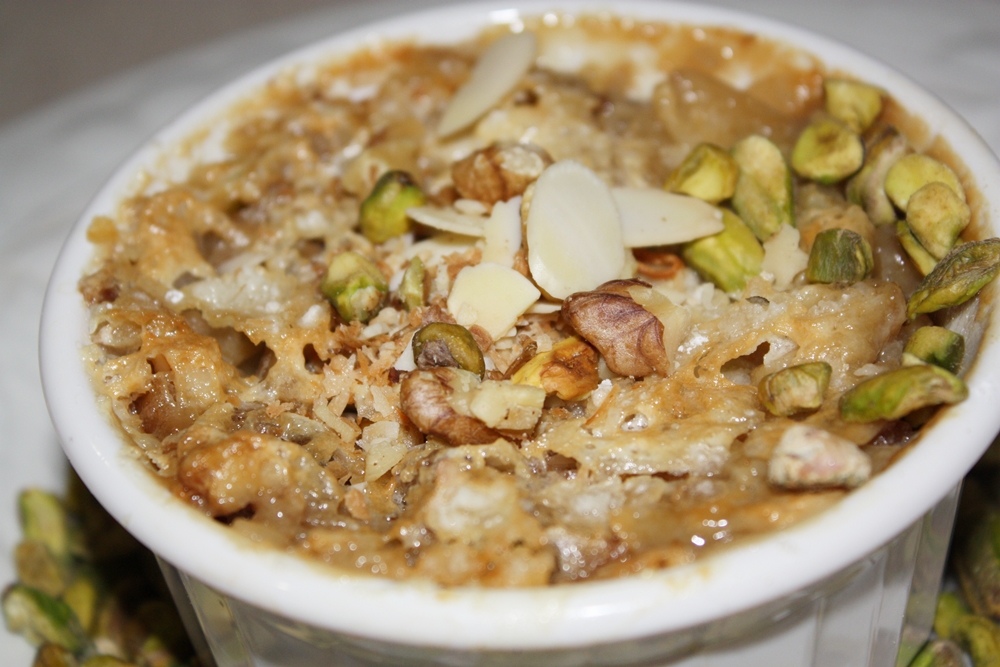
|
Activity 1
Write the missing words after reading the chapter above
Most Popular Traditional Clothing in Egypt
- Egyptian fashion mostly has simple patterns with high-quality cotton, linen, and wool fabrics mixed with Islamic, ottoman, and European cultures, traditions, and customs.
- There are differences in the styles of fashion between rich and poor, farmers and city residents, Muslims and non-Muslims.
- Egyptian Men's outfit differs from one place to another. Men mainly wear "Gallegaya" in striped colors with baggy pants and wide and large sleeves. For their headdresses, they put "taqiyia", or "turban" made from cotton.
- Egyptian women's fashion is mainly inspired by Islamic Culture attire. Women wear "Gallebaya" that fully cover their bodies with headdresses, ears, and necks. while some of the women wear European fashion and others wear Islamic clothing with either Hijab or Burka.
Watch this video about Ancient Egyptian Fashion
Egyptian Women's Traditional Clothing
Egyptian Men's Traditional Clothing
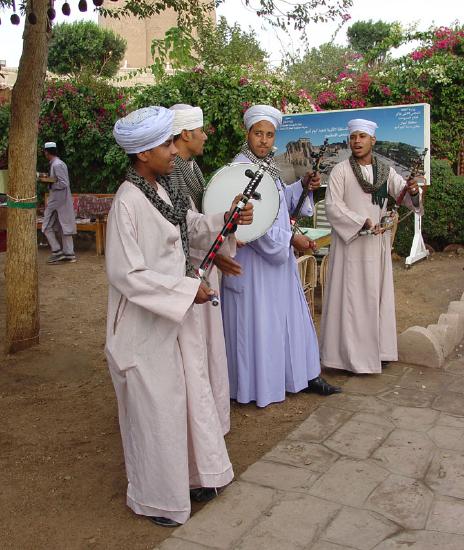
Plan a trip to Egypt during summer break. List the cities and historical places you want to visit and the famous dishes you want to eat.


 Learning Objectives
Learning Objectives.svg.png?revision=1&size=bestfit&width=404&height=227)

.jpg?revision=1&size=bestfit&width=261&height=392)
_and_veil_(tarha)_-_Cairo_in_Egypt_-_Collected_in_2002.jpg?revision=1&size=bestfit&width=298&height=397)
.jpg?revision=1&size=bestfit&width=257&height=386)